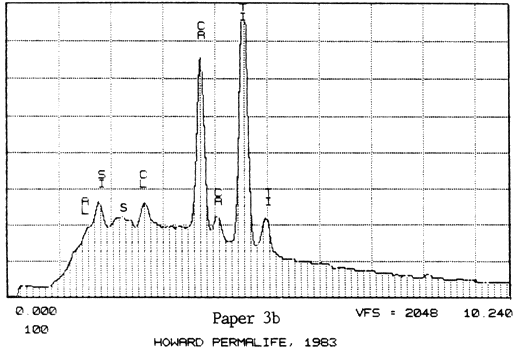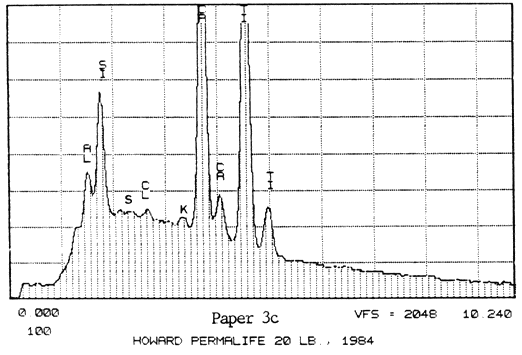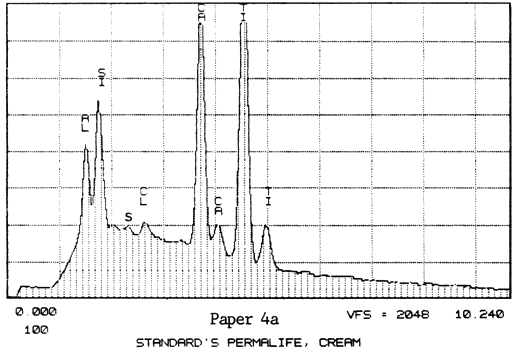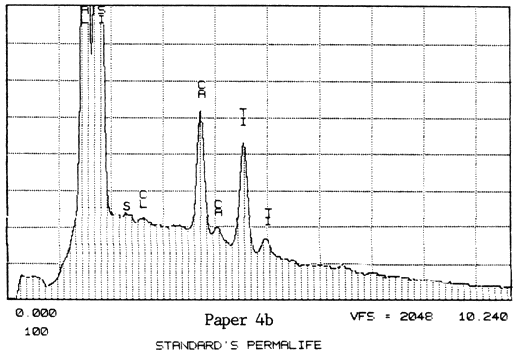

Three years ago, the Editor co-authored and published a study of the pH of new books at Columbia University (AN, Feb. 1984, p. 2). Part of that study involved a test for the presence of alkaline reserve or buffering in the book paper. This test was performed on tiny samples punched from the pages and from other papers known or believed to be either alkaline or acidic, as a control. It involved moistening the sample with a drop of acid (6N HCl) and observing under magnification the presence or absence of effervescence--a modification of the qualitative test suggested in ANSI/ASTM D 3290-76, "Standard Specification for Bond and Ledger Paper for Permanent Records." The majority of papers with a pH above 6.7 did effervesce--but inexplicably, some well-known permanent papers in the control group did not. Among them were the following papers:
The paper chemists at Mohawk and Howard, when contacted by telephone, said their papers were definitely buffered, but could not explain the absence of effervescence.
In an effort to clear up the mystery, analyses of these same control papers were requested in 1985 and 1987 from two paper testing labs. One lab tested three papers for % carbonate, and found wide variation between determinations or samples, which suggests that the carbonate is not uniformly distributed in the sheet.
| % Carbonate | |||
|---|---|---|---|
| Det. 1 | Det. 2 | Average | |
| 1. Mohawk Superfine | 0.84 | 1.60 | 1.2 |
| 2. Howard Perma-Dur | 2.65 | 2.15 | 2.4 |
| 3. Howard Permalife | 1.80 | 2.87 | 2.4 |
These results were forwarded by Maurice Douek head of the Analytical Services Section at the Pulp and Paper Research Institute (PPRI) of Canada, who observes, "It is possible that on the samples that you tested, the amount of carbonate was too low to be detected by adding acid."
The other lab analyzed two samples of Paper #3 (purchased in 1983 and 1984), two of Paper #4 (white and cream, manufactured before 1976) and one of Paper #5 (a sample received about 1980), to detect the presence and relative amounts of calcium. For comparison, they also analyzed one sample of Ecusta Waylite, the paper on which this Newsletter
is printed, which effervesces vigorously in contact with acid, and which is about 20% carbonate by weight. The method used was energy dispersive X-ray analysis.
All of the papers contained substantial amounts of calcium. It is not known whether the Permalife analyzed by the first lab came from the same batch as either of the samples analyzed by the second. One can see, however, that the amount of calcium in the different samples varies quite a bit, even within the same brand of paper (Permalife).
Cursor: 0.00kev=0

Cursor: 0.00kev=0

Cursor: 0.00kev=0

Cursor: 0.00kev=0

Cursor: 0.00kev=0

Cursor: 0.00kev=0
